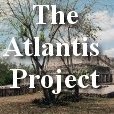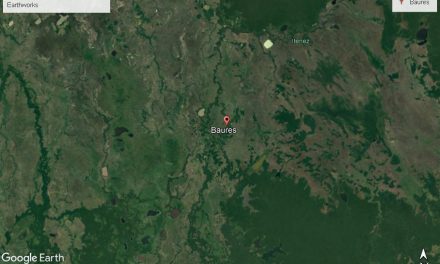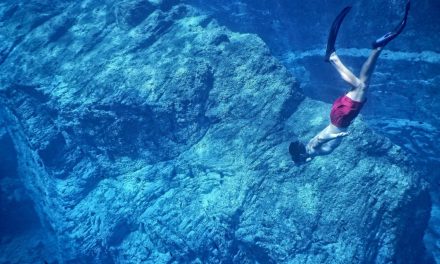SOUTHERN SPAIN – A POSSIBLE LOCATION FOR ATLANTIS
Greek philosopher Plato wrote about Atlantis about 2,600 years ago, describing it as “an island situated in front of the straits which are called the Pillars of Hercules,” as the Straits of Gibraltar were known in antiquity. Searches of Plato’s detailed account of Atlantis as a map, have focused on the Mediterranean and Atlantic as the best possible sites for the city.
There has been debate about Atlantis’ existence for thousands of years, Plato’s “dialogues” from around 360 B.C. are the only known historical sources of information about the iconic city. Plato said the island he called Atlantis “in a single day and night … disappeared into the depths of the sea. Today, Donana is a peaceful nature reserve beloved by bird-watchers, but as it has a violent history. The offshore Azores-Gibraltar Transform Fault shifts roughly every 350 to 450 years, unleashing huge earthquakes and Tsunamis that obliterate anything built along the coast. (The last such quake, in 1755, levelled Lisbon.). It’s geologically impossible for a city to sink to the bottom of the ocean, but an ancient cataclysm might account for Plato’s famous description of an island vanishing in “a single day and night of misfortune.
Andalusia is a region in modern day southern Spain which once included the “lost” city of Tartessos, which disappeared in the 6th century BC. The Tartessians were traders known to the Ancient Greeks who knew of their legendary king Arganthonios. The Andalusian hypothesis was originally developed by the Spanish author Juan de Mariana and the Dutch author Johannes van Gorp (Goropius Becanus), both of the 16th century, later by Jose Pellicer de Ossau y Tovar in 1673, who suggested that the metropolis of Atlantis was between the islands Mayor and Menor, located almost in the center of the Doñana Marshes, and expanded upon by Juan Fernández Amador y de los Ríos in 1919, who suggested that the metropolis of Atlantis was located precisely where today are the ‘Marismas de Hinojo
‘.These claims were made again in 1922 by the German author Adolf Schulten, and further propagated by Otto Jessen, Richard Hennig, Victor Berard, and Elena Wishaw in the 1920s. The suggested locations in Andalusia lie outside the Pillars of Hercules, and therefore beyond but close to the Mediterranean itself.
According to Rainer Kühne, a German physicist, confirmed by satellite photos http://news.bbc.co.uk/2/hi/science/nature/3766863.stm that the “Island” of Atlantis was in fact a region of the southern Spanish coast that was destroyed by a flood between 800 B.C. and 500 B.C. “These satellite photos show rectangular structures and concentric circles that match very well with Plato’s description of the palaces and the city of Atlantis,” said Kühne, whose research was reported in the journal Antiquity.
Many possible locations have been pinpointed over the years as the home of Atlantis, the lost island of legend first mentioned in Plato’s Timaeus and Critias writings. A team led by University of Hartford, Conn. researcher Richard Freund has found evidence of the existence of Atlantis in the mud flats of southern Spain. This particular finding is notable because of the presences of cities in Spain that are modelled in the image of the lost city of Atlantis.
The belief is that refugees headed inland after a tsunami struck, burying the island and its city in what is now the Donana National Park in Spain’s Andalusia region. The discoveries made by Freund and his team will be detailed in a National Geographic documentary, Finding Atlantis. “It is just so hard to understand that it can wipe out 60 miles inland, and that’s pretty much what we’re talking about,” said Freund, a professor at the University of Hartford who led an international team searching for the true site of Atlantis. Tsunamis in the region have been documented for centuries, Freund says. One of the largest was a reported 10-story tidal wave that slammed Lisbon in November, 1755. Depending on land elevations, a tsunami of that scale would presumably dwarf the 10-metre wave that hit Japan on March 11 and travelled six miles inland.
Every year during the winter rainy season, the Guadalquivir River soaks Donana’s plain and leaves behind a new layer of sediment. If Atlantis really had been located in Donana, it might now be buried under 20 feet of silt and clay.
Using electro-imaging equipment designed to locate oil deposits, the research team discovered submerged shapes that point to the former existence of a city in the Spain location. Subsequent explorations yielded a wealth of evidence, including carved artefacts and an evidence of wood dating back to 440 B.C., found in core sample taken from more than 40 feet below the surface. These samples also contained a layer of methane, which Freund believes is yet another vitally important clue.
If the findings turn out to be accurate, this discovery would put to rest years of hypothesizing, not just over the physical location of Atlantis but also the truth of its existence.







